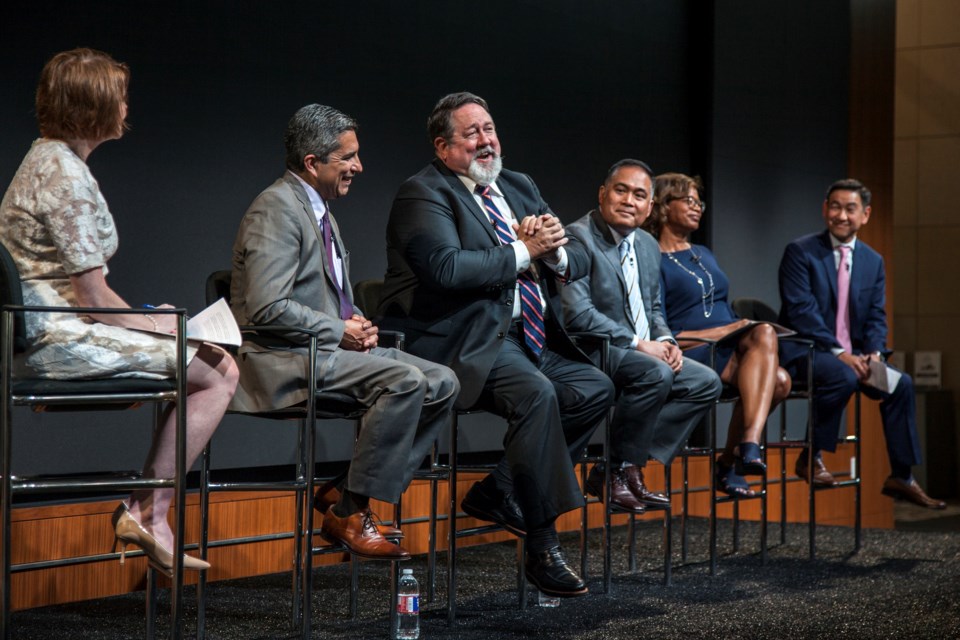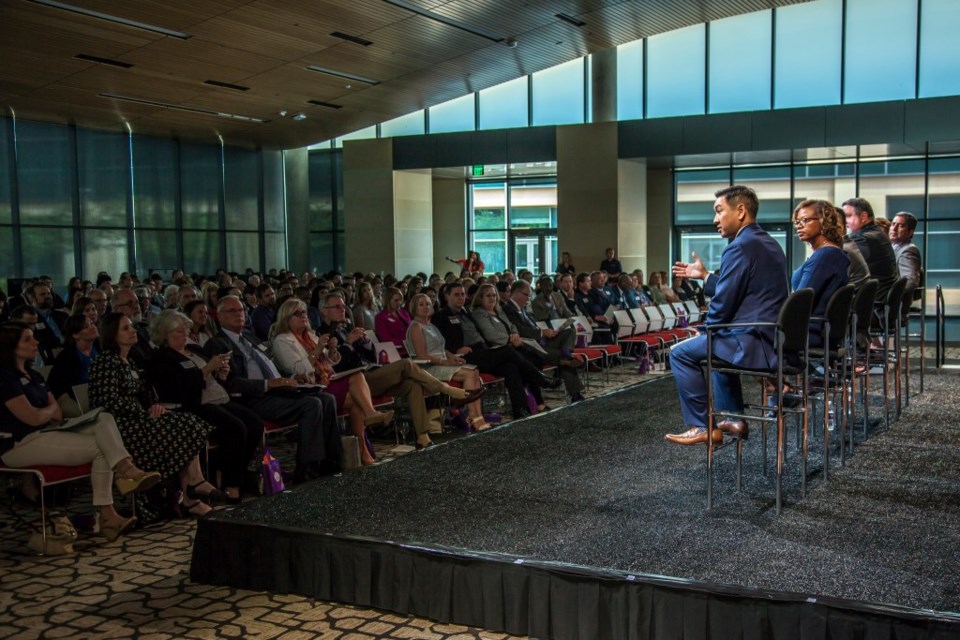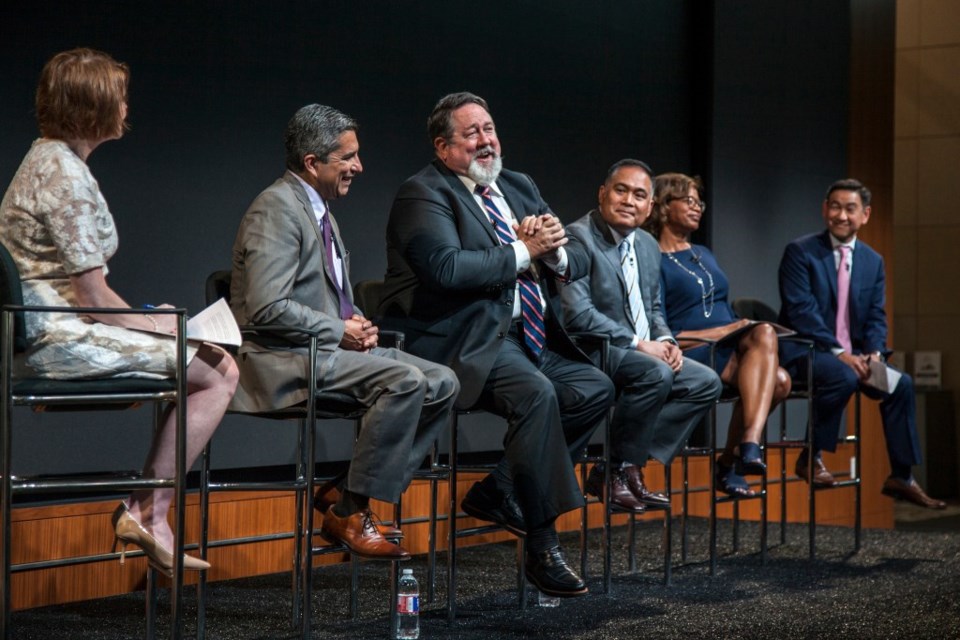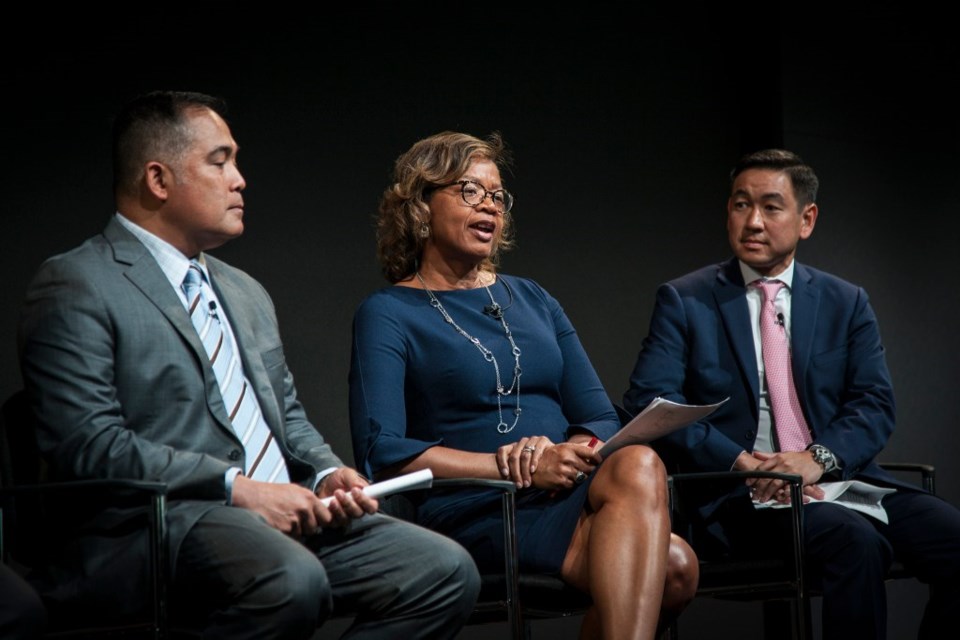As Collin County businesses and companies continue to thrive, more workers will be attracted to the region for jobs. However, across the nation, there will be 2.5 million jobs that are not filled due to workers not meeting the qualifications. The jobs are all based in fields of science, technology, engineering and mathematics (STEM). In order to discuss this problem, Communities Foundation of Texas (CFT) and the Toyota USA Foundation co-hosted a panel discussion earlier this month.
U.S. STEM education and business
Towards the start of the panel discussion Alfreda Norman, senior vice president of the Federal Reserve Bank of Dallas shared some statistics that left the crowd breathless.
“In surveys conducted by the Organization for Economic Cooperation and Development (OECD), the United States ranked 20th out of 29 countries. The U.S. ranked 17th in literacy, 23rd in math and 15th in problem-solving,” said Norman. “The United States ranks 24th of 35 developed countries in math, science and reading skills among 15-year-olds.”
That was an average of those three skills. Individually, the U.S. ranks 19th in science, 20th in reading and 31 in mathematics out of 31 countries. Norman also shared some individual statistics about Texas. She said Texas ranks 22 in math, 38 in reading and 22 in science among the 50 states.
Read more: The challenges and opportunities facing Collin County
Despite these rankings, Texas is “the place to be” according to Norman.
“Texas is very rich when it comes to dominant industry clusters. The job and talent pipeline needs to be geared so that workers are going into these clusters,” said Norman. “STEM education is important to this job pipeline and growth.”
While STEM education was the main topic, the panelists did not necessarily focus on the importance of learning things like physics, computer science or thermodynamics. Rather, it was more about the skills learned through those lessons.
“There is a real desire to have a greater emphasis on core disciplines of science, technology, engineering and math,” said Geroge Tang, managing director of Educate Texas. “What STEM has evolved to over the past decade is more than that. It’s also about how to teach people to work independently with other; how to analyze information and synthesize it into a coherent thought. In the 21st century, STEM should stand for ‘successful in today’s evolving marketplace.'”
Tang went on to discuss the certain milestones in children’s educational development. These milestones were in third grade for reading and eighth grade for math and science. A students success in algebra 1 is an indicator of how they’ll succeed in a post-secondary environment, according to Tang.
[media-credit name=”Communities Foundation of Texas” align=”aligncenter” width=”1000″][/media-credit]Preparing students for STEM fields
“What do we do?”
“What can we do to support our students here?”
“How do we get kids to experience things and give them opportunities?”
These are some of the questions that shaped the discussion about the future impacts STEM will have on the business culture of North Texas. To start Norman stated that the current notion of a K through 12 education is outdated. “It needs to pre-k through 14,” she said.
The new concept was later called a “cradle to career pipeline.” This extends beyond just the classroom setting. Parents and caregivers would have to expose their children to STEM and talk about its importance. However, Tang mentioned that for some students this might be a challenge.
“Sixty percent of Texas’s 5.5 million students are economically disadvantaged. They don’t understand the relevance or importance of STEM on their current or future path,” said Tang. “One of the things we’ve been looking at to counteract some of these challenges is to start early.”
Providing opportunities for students to be exposed to STEM-related career fields is one of many ideal solutions the panelists talked about. For example, Dr. Neil Matkin, president of Collin College, talked about an apprenticeship type of program in Germany where students go to school half-time and are at the apprenticeship the other half.
Read more: Full STEAM Ahead at Plano Academy High School
“The kind of programs convince students that they are able to things they originally didn’t think they could do,” said Matkin. “They become inspired and encouraged.”
Dr. Matkin also acknowledged a former Collin College student in the room who was actually working with Toyota. The panelists spoke about the myth that students must have a four-year degree to succeed. Matkin said the past two to three generations have grown up with that mindset, and it needs to stop. He spoke about the opportunities a community college can provide that allow as cheaper alternatives to prepare students for the workforce.
Another problem that will plague deplete the workforce of skilled and qualified workers is general participation.
“We don’t talk about it, but the demographics are changing,” said Norman. “Even among people with college degrees, male and female prime-age labor force participation have declined in the United States at a fast rate over the past 20 years.”
The problem of workforce participation has a direct impact on policy, according to Norman. Maternity leave and child care policy, incarceration rates, job training and search programs are all issues that are not being talked about.
[media-credit name=”Communities Foundation of Texas” align=”aligncenter” width=”1000″][/media-credit]Future of STEM and business
Equipping children to tackle future job demands is going to take a community effort. The panelists talked about starting with changing policy.
“Let’s do all we can to strengthen the possibilities for our students,” said Andres Alcantar, chairman of the Texas Workforce Commission. “I’m very optimistic that we can do that in this next legislative cycle.”
“We don’t have to wait for a federal program, it’s just a matter of coming together,” said Norman. “We can make a difference. We just have to make it a priority.”
Collin County continues to prosper and as Dave Scullin, president and CEO of Communities Foundation of Texas, said in his closing remarks, “North Texas is a vibrant community. There is going to be a lot of jobs out there. It is imperative that we provide our students with pathways to prepare them for success in school, the workforce and in life.”
For more information about the event visit cftexas.org/putting-stem-to-work







